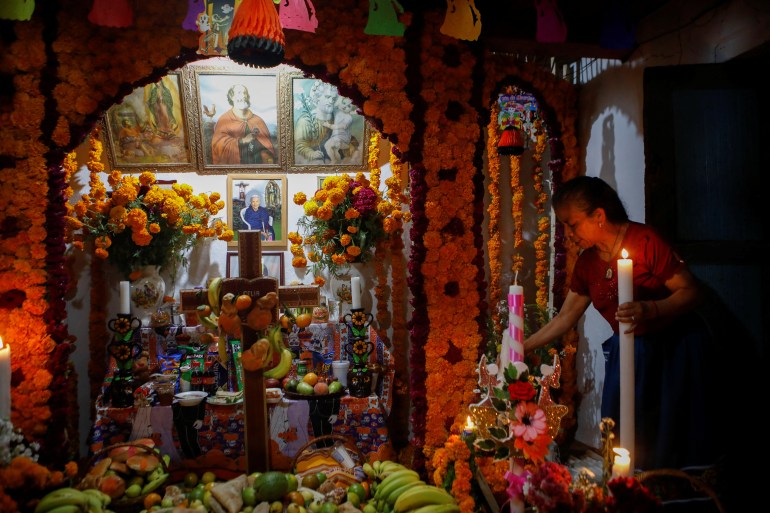What is Day of the Dead? A celebration of the dead and the living
According to tradition, on the Day of the Dead the heavens open, and departed souls return to earth, briefly.
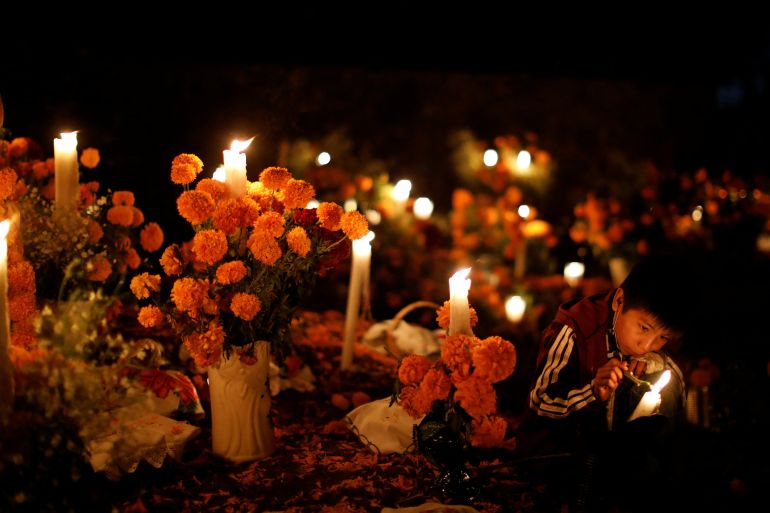
Every year, Mexicans gather in cemeteries to remember their departed family members, in a celebration that is the country’s most important fiesta. According to tradition, the heavens open, and the souls of the dead come back to earth.
Here is everything you need to know about the Day of the Dead:
Keep reading
list of 3 itemsDay of the Dead
In Pictures: Pandemic casts shadow over Mexico’s Day of the Dead
What is the Day of the Dead?
It is not just one day. In fact, it’s a two-day celebration that is traditionally observed on November 1 and 2, where families welcome back the souls of their deceased relatives for a brief reunion that includes food, drinks and even toys at altars, all of which serve to entice the souls on holiday to visit.
It is marked as a celebration rather than a sombre affair, a time when the living and the dead are believed to connect.
“This is a celebration. The sadness is there when our relatives died, but during this day, we have to show them that we remember them with happiness,” Yoroslay Delgado told Al Jazeera.
“We dance, we sing – they need to feel they are welcome.”
The festivities could also start on October 28, depending on the location, and some places observe the day on November 6.
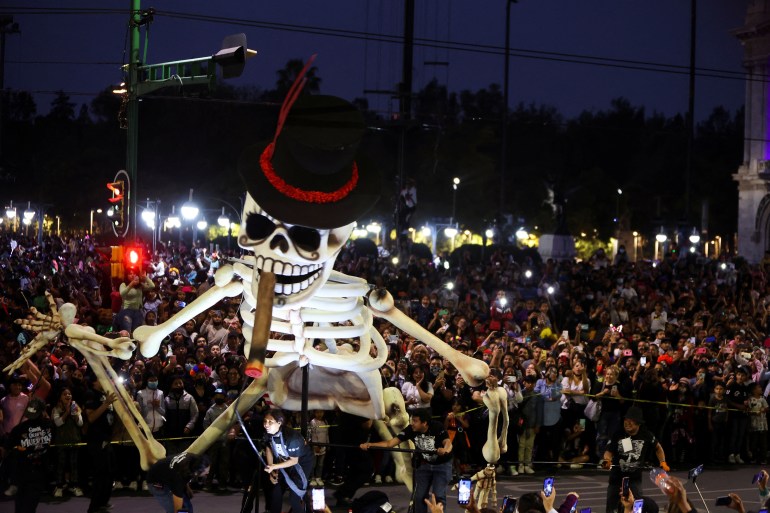
Who celebrates the Day of the Dead?
It is a national holiday in Mexico, but it is also celebrated throughout Latin America, Spain, the Philippines and parts of the United States.
How did the celebration originate?
The celebration is believed to be a pre-Hispanic tradition that came from Indigenous communities dating back thousands of years.
For the Aztecs, death was transitory, and souls could come back and visit. According to some analysts, after the Spanish arrived in the 16th century, those traditions were melded into the Catholic calendar and are now celebrated to coincide with All Souls’ Day.
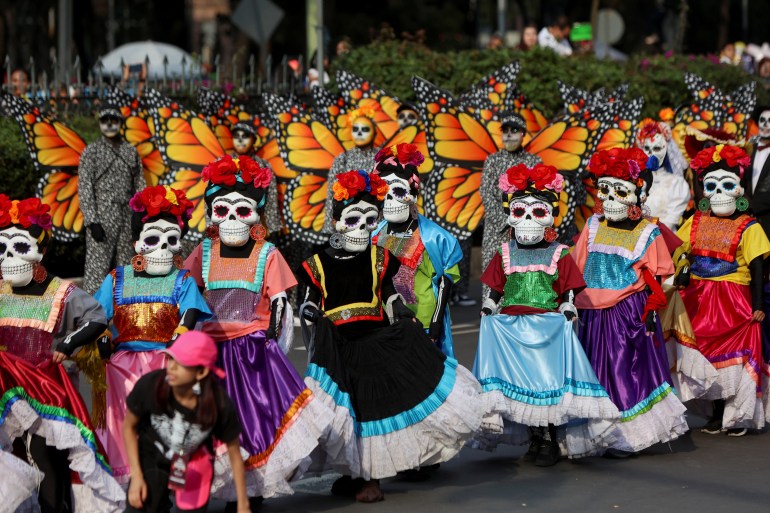
How is the day celebrated?
In many parts of Mexico, families will spend November 1 remembering the children, often referred to as “angelitos” (little angels), decorating their gravesites with toys and balloons. On November 2, they will celebrate All Souls day, dedicated to adults who have died.
Families create “ofrendas” (altars) on the graves of their loved ones. They also use cempasuchil flowers (marigolds), as these are believed to help lead spirits back from the cemetery to their family’s homes.
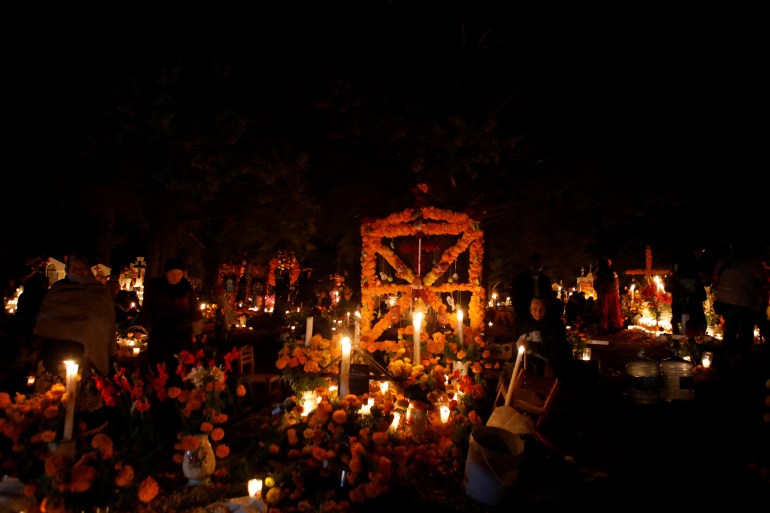
Others write short, satirical poems, also known as “calaveras” (skulls), which are epitaphs of friends that describe their interesting habits and are peppered with funny anecdotes.
The skull, which represents the cyclicity of life, is a predominant symbol of the day. Sugar or chocolate skulls can be given as gifts to both the living and the dead. Also popular is pan de muerto, a bread made in different shapes, often decorated with white frosting to represent the image of twisted bones.
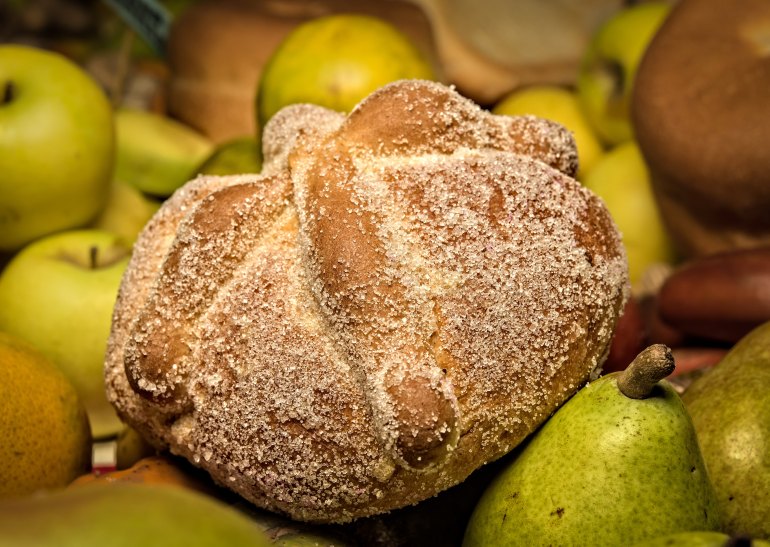
How are the altars (ofrendas) built?
The altars are an important element during the celebration as they show the souls the way home, while they also include elements that honour and please the departed.
The altars usually include photos of the visitors. They can have two levels to symbolise heaven and earth, a third level to represent purgatory or seven levels to the steps to go to heaven.
The altars include a representation of the four elements. Water is meant to satisfy the thirst of those visiting; fire burning in candles whose light guides the deceased’s spirit; earth is present in food and other items that are special for the dead; and air is represented by colourful paper cut into designs .
Some altars include salt, which is believed to help those departing during the afterlife journey.
